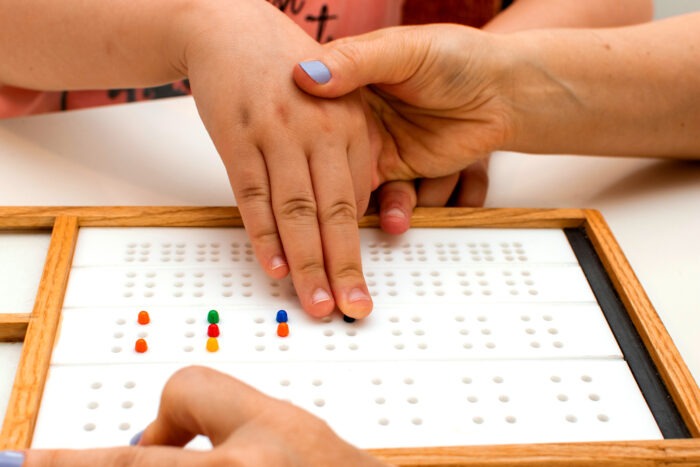The Scottish approach to additional support for learning

Who should read this guidance?
Written to support families with an Armed Forces background, this guidance is primarily intended for parents of children and young people who may require additional support in their learning. That need for support may be temporary, for example, where learning has been interrupted by a change of school as part of life in the armed forces, or it may be longer term.
The information provided here is equally relevant for young people, if you are over 16 years of age that’s you. You have specific rights concerning your education and this guidance will explain more.
About education in Scotland
The Scottish education system has a number of important differences from the other nations in the United Kingdom. For example, the United Nations Convention on the Rights of the Child (UNCRC) has been fully incorporated into Scottish law. An in-depth look at education in Scotland is given in Understanding the Scottish Education System: An Overview for Armed Forces Families, with a focus on supporting children’s learning it is important to know the wider context of schools.
In Scotland, with one exception, all mainstream state schools are managed by the 32 local authorities, also known as councils. All Scottish local authorities have signed up to the Armed Forces Covenant, which includes education provision for children of Forces families. Several special schools receive grant funding directly from the Scottish Government and are not managed by councils.
By law, it is a presumption that all children will be educated in a mainstream school unless their needs are such that a special school setting would be more appropriate. There is a strong tradition of inclusion in Scottish schools, which is often described as Getting It Right For Every Child (GIRFEC) and delivering good outcomes for children under the headings of Safe, Healthy, Achieving, Nurtured, Active, Respected, Responsible and Included (SHANARRI). The focus of this approach is on the education of the ‘whole child’, where there is a balance between a narrow focus on attainment and the overall wellbeing of the young person, and is secured through the broadly based Curriculum for Excellence (CoE).
Your child’s needs, and how they might be met will be assessed within the wider context of learning, includes a strong partnership between school, parents, children and young people.
Meeting your child’s needs

You may be familiar with the terms Special Educational Needs and Disability (SEND) used in England, Special Educational Needs (SEN) in Northern Ireland or Additional Learning Needs (ALN) in Wales. Scotland uses the term Additional Support for Learning (ASL) for this area of provision and Additional Support Needs (ASN) to help plan how a child or young person can achieve their potential. It is important to understand that although the Scottish system ASL appears to have similarities to the other UK systems, there are some important differences. Certainly, additional support needs, special educational needs and disability are not interchangeable terms.
The Scottish Government specifically recognises that a child or young person may have additional support needs arising from their parents’ service in the Armed Forces1. No diagnosis is needed to establish if a child has an additional support need. That need can also arise from short-term conditions or situations, such as bullying, bereavement or interrupted learning.
It is the case that the inclusive nature of the Scottish education system means that high numbers of children and young people, about 37% of the overall school population in 2023, qualified for additional support. It follows that when you move to Scotland you may find your child’s needs recognised in a way that is different to their present school or setting.
What does this mean for your child?

For many children, their needs will be met by simple changes within the classroom, for example modification of the curriculum or teaching method, such as computer access. Some may require access to a member of staff within the school, while others may get support from specialist staff from outside the school. The nature of the support will depend on the nature of the need, the point your child has reached in their learning and the context of the school.
It may be suggested that your child should have a plan to guide their learning. Different authorities use different terms, but you may hear the terms Individual Education Plan (IEP) or child’s plan mentioned. There is, however, only one statutory plan in Scotland known as a Co-ordinated Support Plan (CSP). Only very small numbers of children and young people (currently 0.12%) qualify for a CSP, which is different from an Education and Health Care Plan (EHCP) in England, a statement in Northern Ireland or an Individual Development Plan (IDP) in Wales. Whatever the contents of the plan, it is important for the child or young person that their learner journey is as smooth and free from gaps as possible. You can play an important role in helping with this key issue.
What should you do to help support?
The complexity of this area of provision means that the best source of advice for your child, in the first instance, will be the headteacher and staff of the Scottish school serving the area where you will live. Therefore, as soon as you know the details of your posting you are encouraged to make contact as soon as possible with your new Scottish school to discuss your child’s learning. The school will be able to make time for you and can arrange a visit for you and your children. All Scottish schools also publish a handbook, which they will make available to you.
Before leaving your child’s present school, you should ensure you have as much information as possible about your child’s learning needs, including any documents associated with an EHCP, statement or IDP. This information should be made available to the school in Scotland, which will have a duty to include it in any assessments. You may wish to encourage the staff of your child’s present school to contact the new school to share information.
If you think your child has more complex needs, for example requiring particular support, specific resources or a specialist placement, then you should contact the local authority where you will live.
More advice
- The ADES National Education Officer can be contacted here, or by email to nationaltransitionsofficerades@gmail.com
- The ASN section of this website (Forces Children’s Education).
- Enquire – The Scottish advice service for additional support for learning
- See page 11 of the national code of practice in Scotland, Supporting Children’s Learning: Statutory Guidance on the Education (Additional Support for Learning) Scotland Act 2004 (as amended) published by the Scottish Government
More for
families
We have lots of useful guides for families of school-age young people in our Families section.
More for Educators
Our Educators section is filled with valuable information for teachers of Forces children across Scotland.